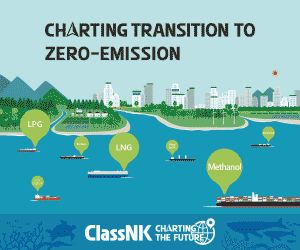The International Energy Agency (IEA) released its Oil 2025: Analysis and Forecast to 2030 report, highlighting how amid the intensifying geopolitical strains and heightened uncertainty about global economic prospects, oil markets are undergoing structural changes.
The IEA’s new medium-term outlook highlights that global oil supply growth will significantly outpace demand in the coming years amid the Israel-Iran conflict spotlighting energy security risks.Global oil supply is expected to grow much faster than demand in the coming years.
China’s oil consumption is expected to peak in 2027, driven by rising electric vehicle sales and increased use of natural gas in transport. On the other hand, US oil supply growth will slow due to reduced spending but remains the largest contributor to non-OPEC supply increases.
In addition, global oil demand is forecast to grow by 2.5 mb/d from 2024 to 2030, reaching about 105.5 mb/d, while production capacity is expected to rise over 5 mb/d to 114.7 mb/d by 2030. This increase is largely due to growth in natural gas liquids (NGLs) and other non-crude liquids, driven by petrochemical demand and liquid-rich gas resource development.
Based on the fundamentals, oil markets look set to be well-supplied in the years ahead – but recent events sharply highlight the significant geopolitical risks to oil supply security. When it comes to energy security, there is no room for complacency.
…said Fatih Birol, Executive Director, IEA.
Subdued trade and IMO efficiencies erode marine fuel demand growth
Demand for marine fuels, which is comprised of maritime bunkers and domestic navigation, is expected to flatline at around 5 mb/d over the forecast period, as subpar underlying growth in shipping combines with rising costs in the wake of the ongoing tightening of marine decarbonisation standards.
Recent years have seen significant disruptions to global maritime traffic, as attacks on vessels in the Red Sea forced some vessel operators to avoid the Suez Canal and seek alternative routes. Additionally, a severe drought at the Panama Canal reduced transits.
While longer journeys and faster speeds initially supported bunker sales, international bunkering gains of 140 kb/d in 2024 were only slightly above trend, as soaring freight and insurance rates disincentivised maritime transport. Weak economic growth also acted as a headwind, with Germany’s protracted slump weighing on European bunker sales. T
Furthermore, the tariff turmoil unfolding in 2025 will make for an even harsher environment for global trade and shipping, with marine fuels disproportionately affected by lacklustre economic expansion. This merely accelerates the ongoing disconnect between GDP growth and maritime trade – the latter has lagged the former for more than a decade – amid a slower pace of globalisation and a GDP-shift from goods to services.
IEA models assume an aggregate increase of around 10% in tonne-kilometres (tkm) over the forecast horizon, but this will be counterbalanced by efficiency improvements. Accordingly, IEA sees a flattish demand profile for marine bunkering. Emission standards mandated by the UN’s IMO will continue to tighten.
Under IMO 2020 regulations, limits already reduced the sulphur content of fuel oil to 0.5%. This prompted a switch from heavy fuel oil (HFO) to very low sulphur fuel oil (VLSFO) and to marine gasoil (MGO), as well as the installation of exhaust gas cleaning systems, known as ‘scrubbers.’ Additionally, the Mediterranean became a Sulphur Emission Control Area (ECAMED) in May 2025, cutting fuel sulphur limits to 0.10% – matching the stricter standards seen in Northern Europe and North America.
In parallel, under IMO regulations approved in April 2025, standards are set to become even more restrictive towards the end of the decade with the introduction of a global greenhouse gas (GHG) pricing system. Merchant ships will have to pay a penalty for above-target GHG emissions starting in 2028, encouraging use of lower emission fuels like biofuels, ammonia and hydrogen.
According to the report, the replacement of oil with natural gas and renewables for power generation in the Middle East, particularly in Saudi Arabia, is also expected to weigh on global oil demand growth in the coming years.
Furthermore, with the petrochemical industry now poised to become the dominant source of oil demand growth from 2026 onwards, the report finds the industry is on track to consume one in every six barrels of oil by 2030.
Demand for oil from combustible fossil fuels – which excludes petrochemical feedstocks and biofuels – may now peak as early as 2027 even as the consumption of jet fuel continues to grow.
 Since petrochemicals are mostly produced from non-refined products such as NGLs, these trends are set to increasingly impact the refining sector.
Since petrochemicals are mostly produced from non-refined products such as NGLs, these trends are set to increasingly impact the refining sector.
The report sees net refinery capacity far exceeding demand for refined products in 2030, which is likely to result in more capacity shutting down in the interim.































































